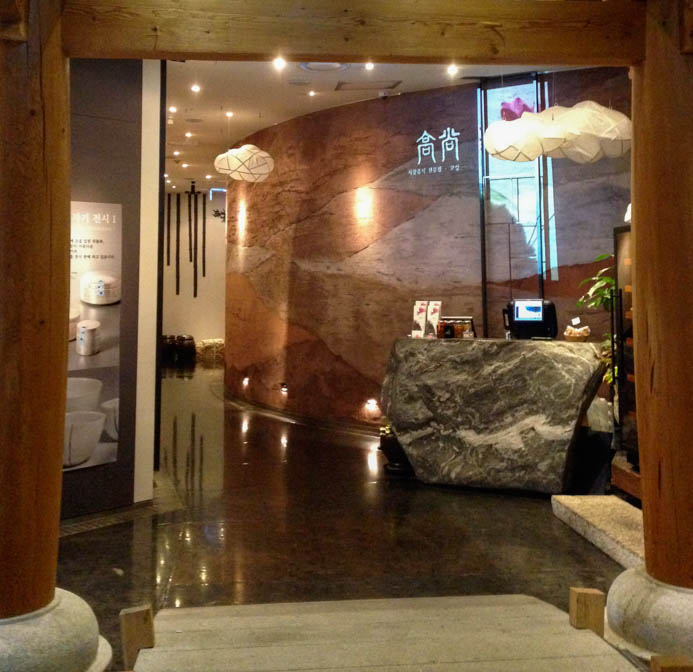
Here is another great Korean restaurant review post via my sister #3. I have always wanted to visit a temple food restaurant while I was living in Korea but just did not get to. I did take a few classes in temple food and that was a lot of fun. Temple food (사찰음식 Sachal Eumshik) are foods eaten by Buddhist monks in Korea. In the past, Temple Food was limited to monks and visitors who come to the temple but recently temple food has become quite popular as just health food to many Koreans. In my temple food classes, I have learned that many people have cured themselves of atopic dermatitis and other diseases by simply switching to vegan temple food. My class instructor swore by it!!
Korean temple food is not only vegan and but also prohibits the use of garlic, chili pepper, scallions or chives, because these ingredients are considered to ‘stimulate the senses,’ which contradicts a life of abstention. You may wonder how such a cuisine can be delicious but surprisingly- it is. The cuisine focuses on allowing the ingredient to shine without letting the pungent aromatics take over the dish. So here it is –
In early Janauary, I was invited to lunch at Gosang – a Korean temple food restaurant – by my publisher. I actually owe the photos to her, because my 3-year old iphone suddenly went dead, and she was kind enough to take the photos for me – on top of paying for lunch.
The entrance resembles a Buddhist temple gate. This restaurant is not run by buddhist monks, but by a woman who started cooking food to cure her child suffering from atopic dermatitis. So the food centers around both Yakseon (medicinal) and Sachal (temple) food. Yakseon food is a type of cooking which uses medicinal herbs to enhance health.
We ordered the ‘jinsang’ course. The first thing we were served was –
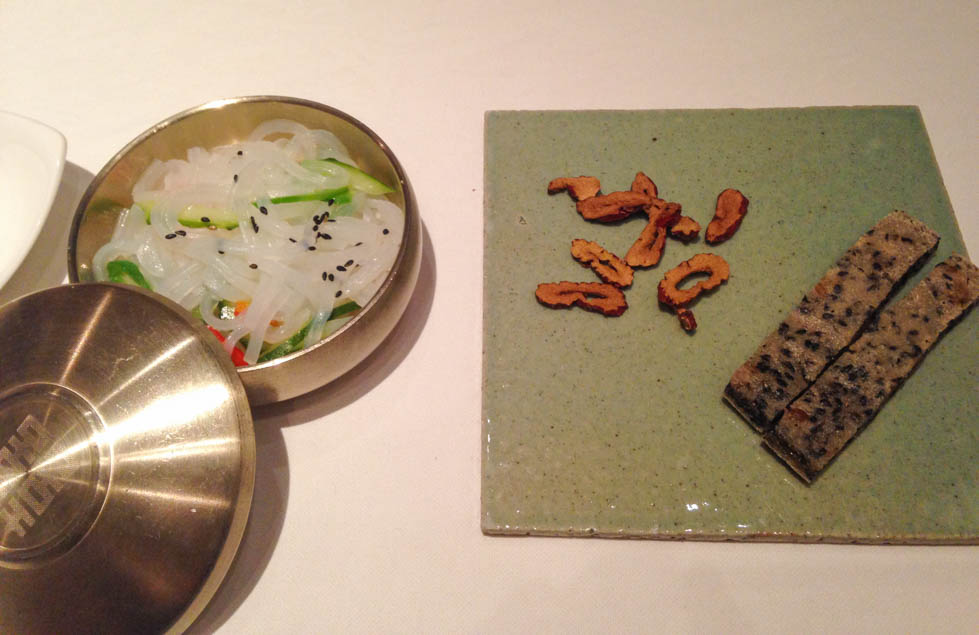
Assorted Snack (jujeon buri), consisting of a mild mungbean jelly salad (청포묵 cheong po muk), crisply dried jujube, and a soft baked pastry with black sesame seeds. Jujube is said to boost blood circulation and raise the body temperature. I’ve been drinking jujube tea these days, and it’s so much better than coffee for relieving fatigue.
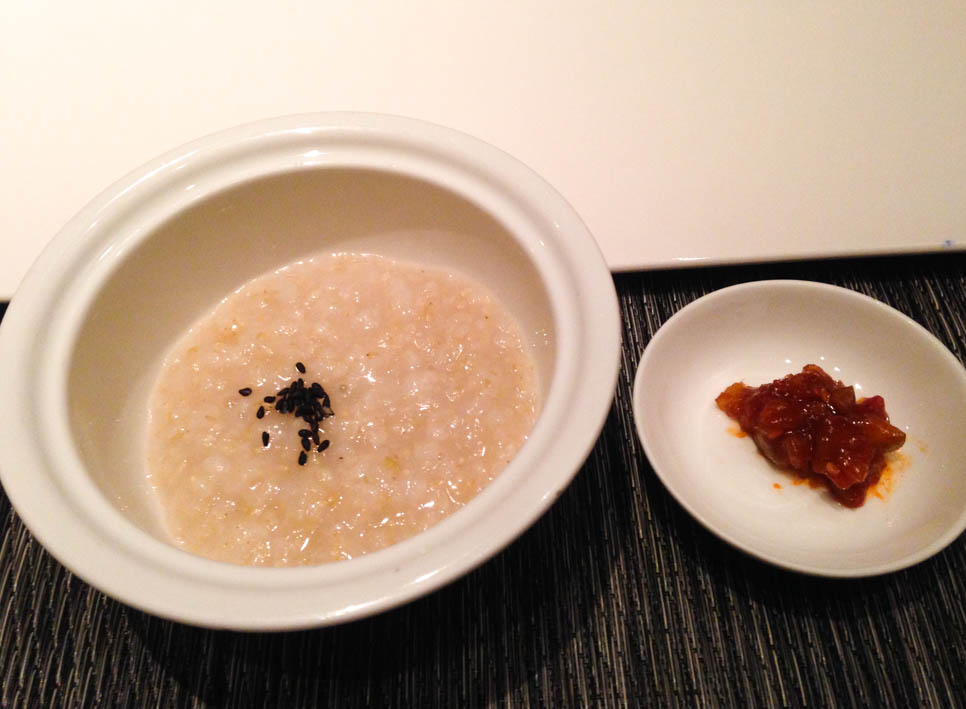
The next course was a small bowl of rice porridge made of castor oil plant, yam, sweet rice, lotus root, and ginseng. Hmm… I could have done without it. As well as the salad that followed. The porridge had a non-descript flavor, and the salad seemed out of place.
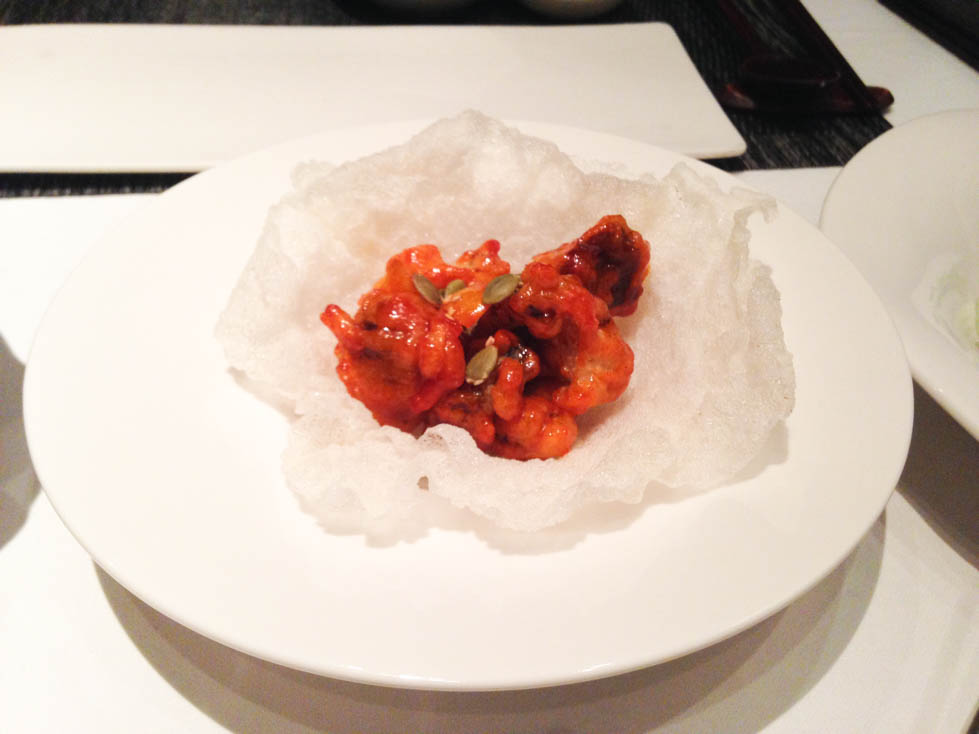
But the next dish was delightful. It was deep-fried and glazed shitake mushrooms served on a bed of crispy rice cracker. If I didn’t know, I would have thought I was eating chicken.
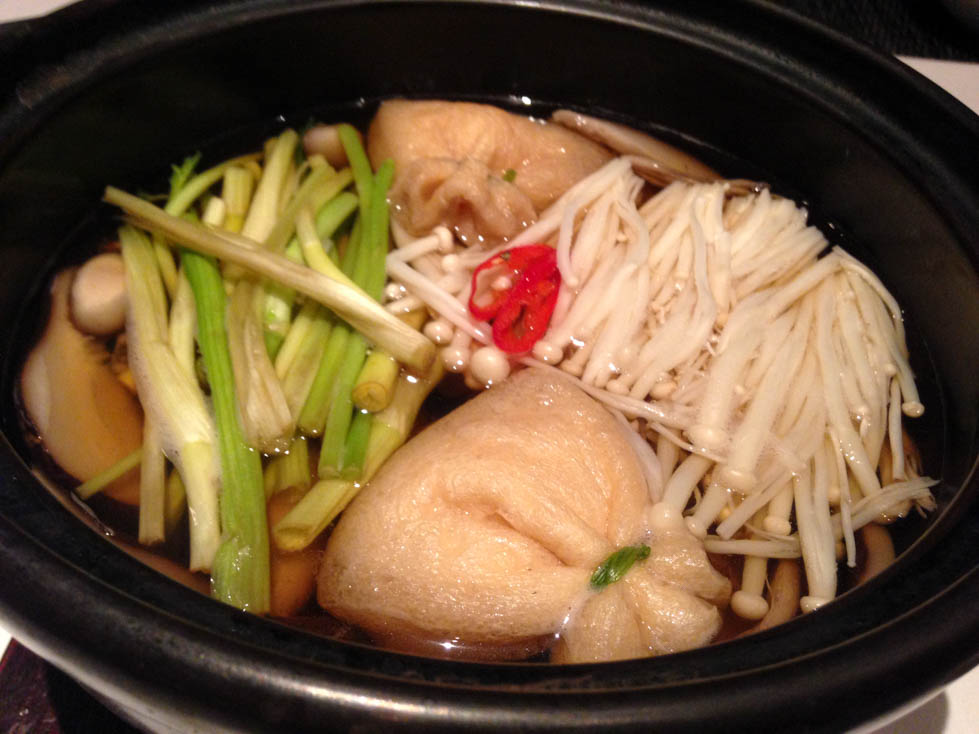
The server then brought in a piping hot straw mushroom stew still bubbling on top of a small flame. It had lots of minari (Javan waterdropwort) in it. Minari is an aromatic herb that grows in water and resembles celery or Italian parsley. It’s a medicinal ingredient with detoxifying effects, but adds a good flavor to any dish. The fried tofu pouches were soft, plump, and delicious, but I no longer remember the filling. I think it was mushrooms. Should have written this article sooner….
Anyhow, the next dish was the Lotus Flower Platter Japchae.
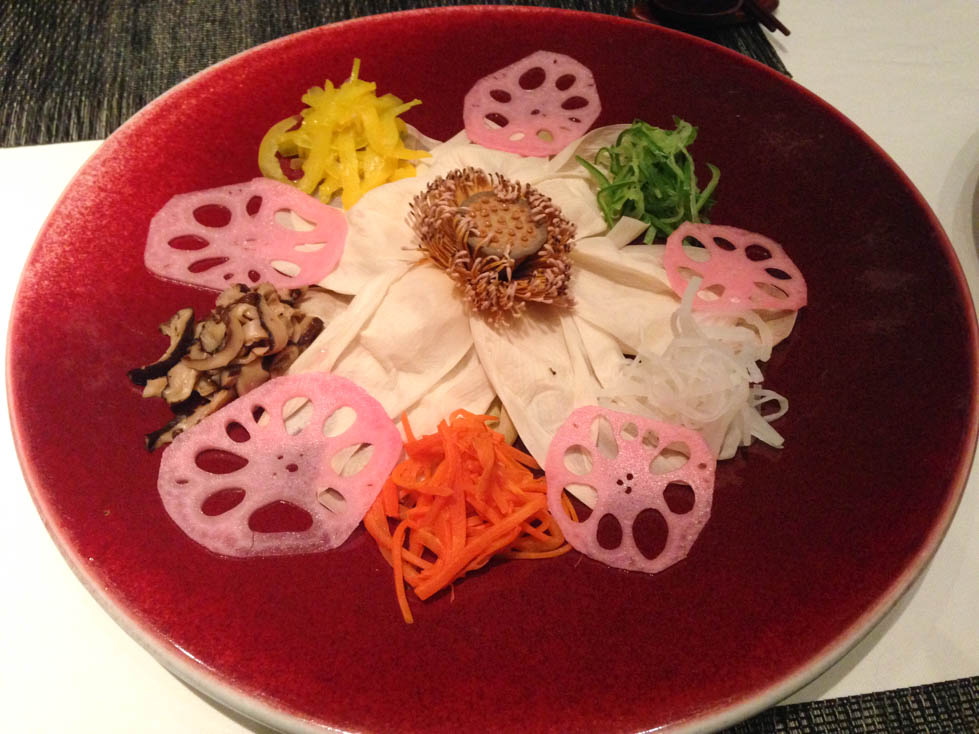
An utter delight! Sliced pink-tinted lotus root, julienned burdock root, carrots, shitake mushroom, and glass noodles were plated with a lotus flower. It was the first time I’ve seen the inside of a lotus flower. But the flower is only for decoration. Burdock roots (U-eong, pronounced “woo ung”) is a root vegetable that only Asians eat. (JinJoo’s Sauteed Burdock Root ) It contains inulin and polyacetylenes : this means it is anti-diabetic, anti-oxidant, anti-cancer, anti-bacterial, anti-fungal, and on and on…. I guess this is why the owner served two similar dishes with burdock roots. Another U-eong japchae was served wrapped in lotus roots. Also very tasty and close to JinJoo’s mother-in-laws famous U-eong japchae.
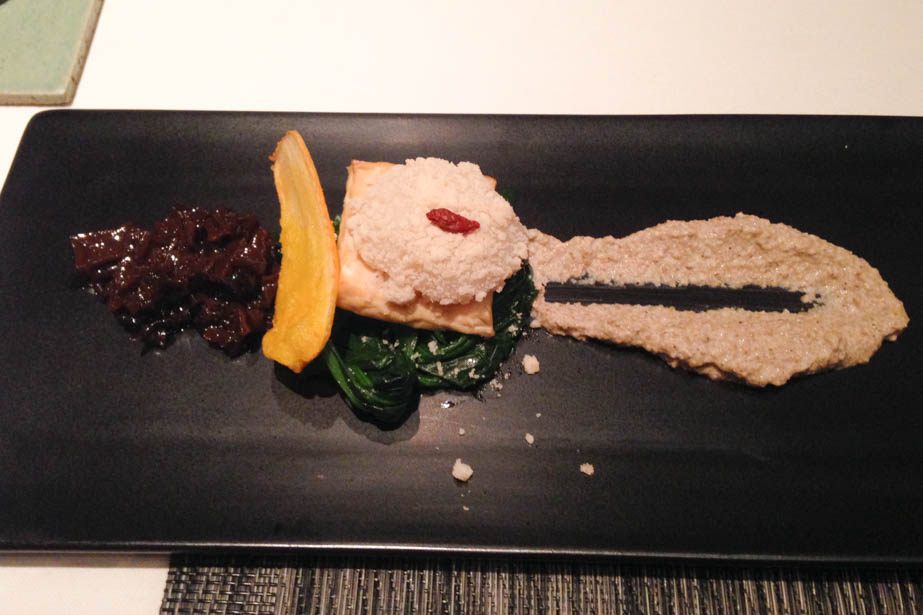
The next dish was fried ginseng served with perilla seed sauce spread across the plate. It was a very modern and western style plating that I really didn’t care for. Of course, ginseng is well known for its health effects, but I really didn’t like this one as much as the two burdock root dishes.
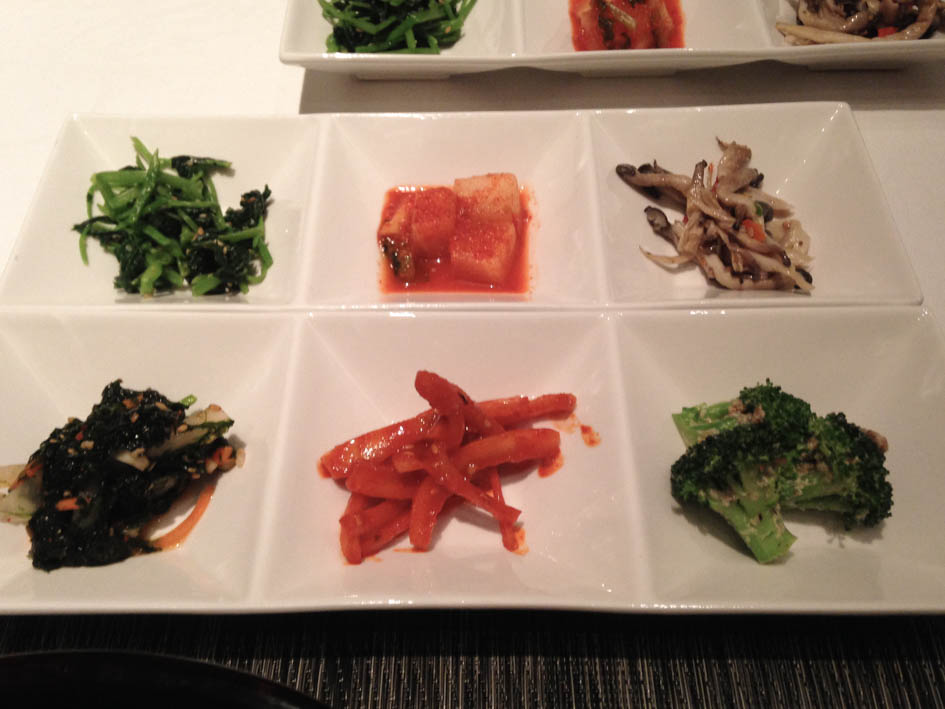
As usual, the final course consisted of spicy banchans, rice and soup. This is where the owner violates the temple food rule. As you can see, many of the banchans were spicy. And broccoli is not a traditional Korean vegetable..

However, the soup was authentically temple cuisine. It was a brew of shitake mushrooms and kelp (dashima or more commonly known by the Japanese word ‘kombu’). The soup had a very nutty and comforting taste. It was amazing how a soup cooked without meat, fish or cream could be so good. But then, kelp was used as a taste enhancer in Korea for a long time before people started to manufacture chemical MSG. I heard that adding piece of dried kelp will make cooked rice also taste really good.
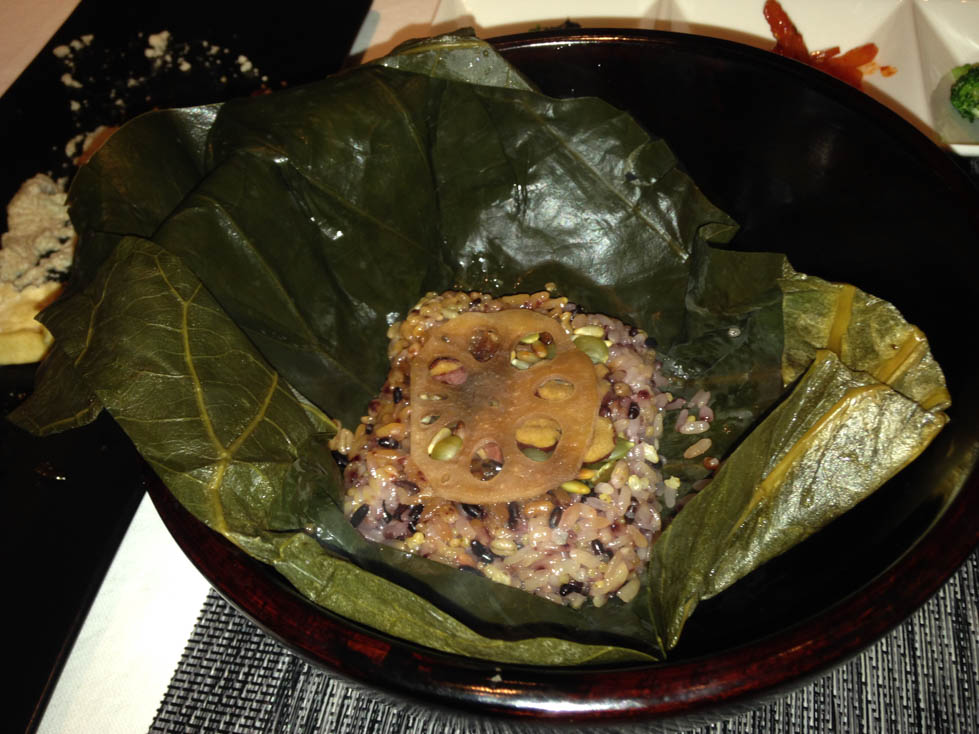
The rice they served was multigrain rice wrapped and steamed in lotus leaf. It looked good and healthy but just so-so in taste. Maybe I was getting tired of lotus by this time.
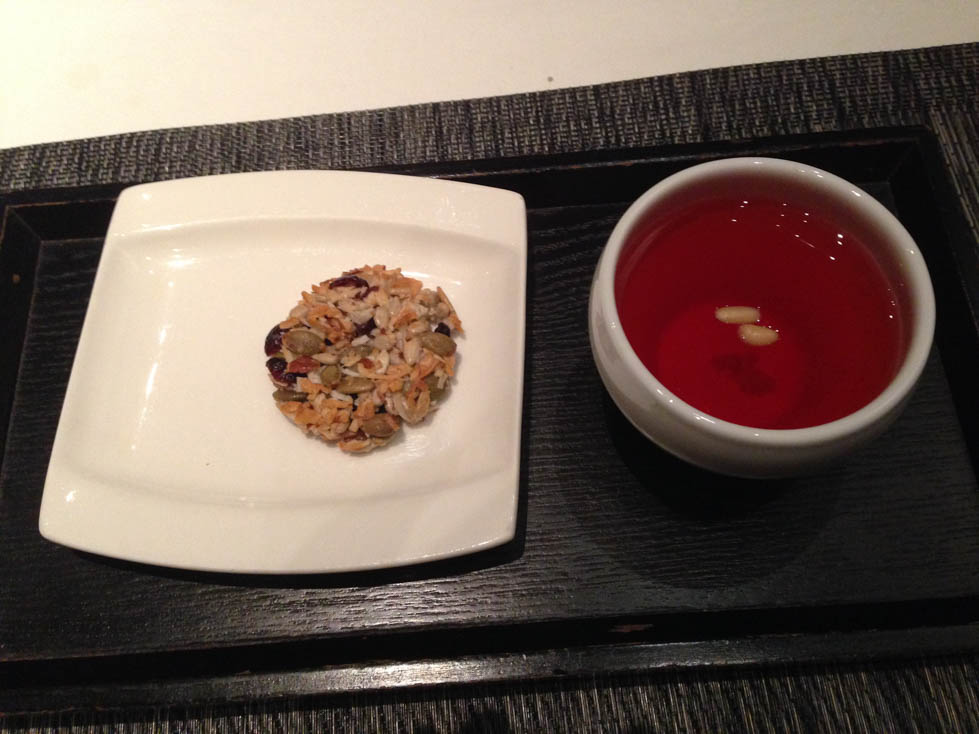
Dessert was omjia berry tea and a cookie. Omija (오미자) is not well known in the US but it is of the climbing berry family. Omija in Korean and Chinese characters literally mean, “5 flavor berry”. Its name comes from the fact that its berries possess all five basic flavors: salty, sweet, sour, pungent (spicy), and bitter. Schisandra chinensis is the binomial name and is also sometimes known as youth berry or magnolia vine. It is known to have various medicinal effects on respiratory, urinary and intestinal health. The cookie is made of various nuts and seeds with no flour or baking powder. It was absolutely delicious. I guess others share the feeling, because the same cookies were being sold at the counter.
The final photo is extra. These are ceramic pieces that were on display at the entrance of the restaurant. Maybe the artist is a friend of the restaurant owner.
All in all, this is a good place to go if you want to taste Korean medicinal and temple food. It’s a slightly altered and modernized version, but it doesn’t lack flavor. It only lacks the usual spicy taste and pungent smell, which makes it very accessible to those unfamiliar with Korean food.
Hope you enjoyed my sister’s review of Korean temple food at Gosang!
My next post will be Spicy Squid Stir-fry (오징어볶음 Ohjingeo Bokkeum) so stay tuned!!
Have a great week,
♥♥
JinJoo
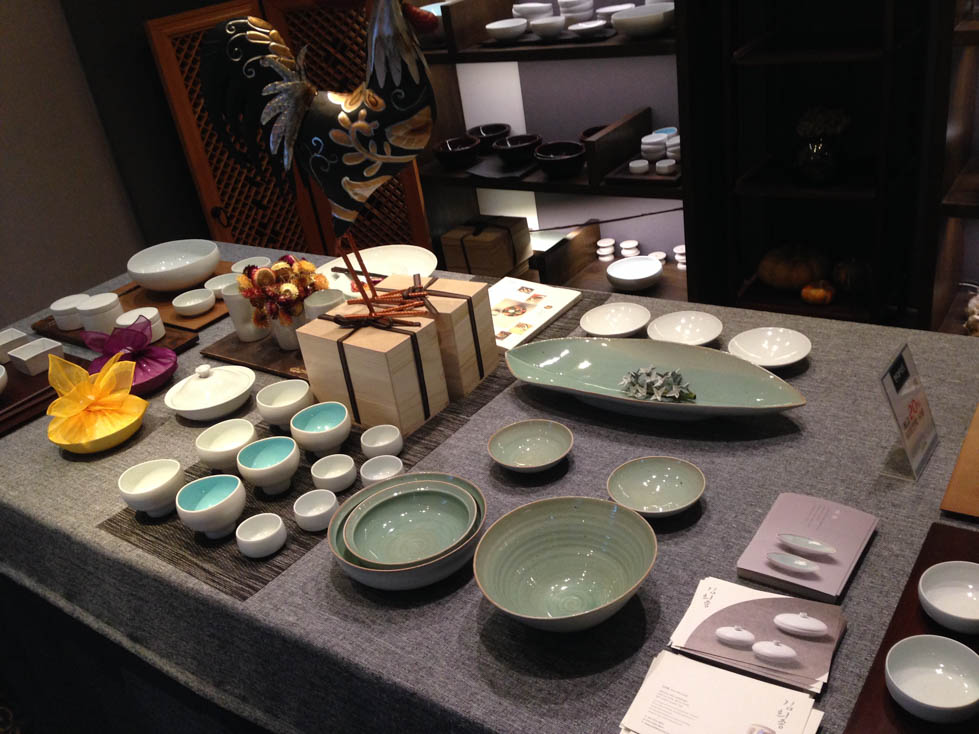
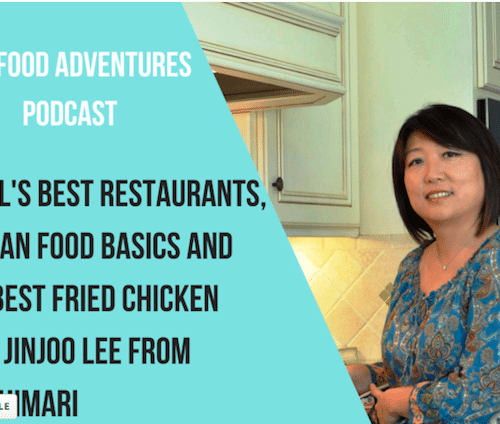
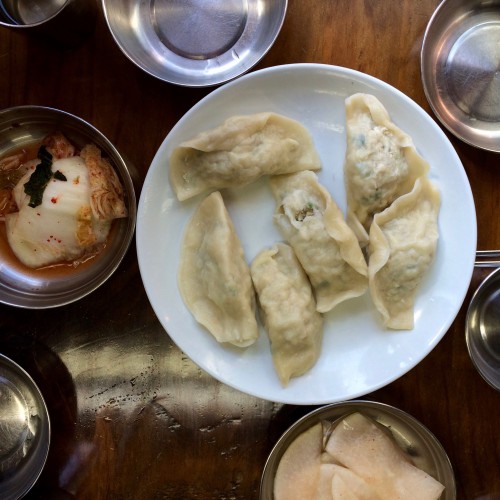
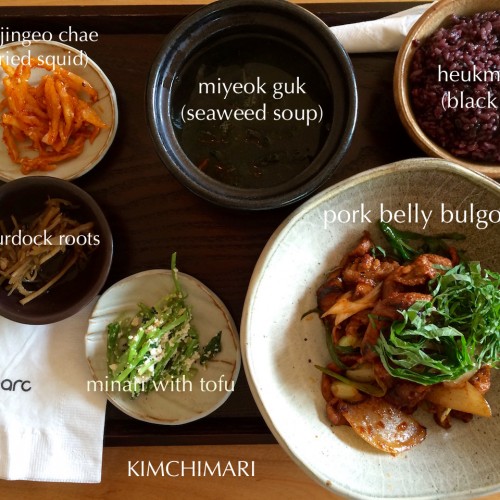
















Hello JinJoo – you mentioned taking a sachal eumshik class while in Seoul. Do you have a good cooking class you can recommend that will teach me how to make sachal eumshik? And also gochujang? I am going to Seoul for two weeks in December and would like a real authentic cooking class to teach me how to cook better vegetables, healthier diet. I understand Korean (as a second generation Korean-American), but am embarrassed to speak 🙂 Any suggestions would be much appreciated – thank you in advance for your help!
So the sachal eumsik class I took was being offered at AK Plaza Dept store 문화센터. Other Dept Stores offer cooking classes so you can check Hyundai Dept store too. Unfortunately many legit temple food cooking classes are offered in series, not just one or two. And honestly, so much of temple food relies on ingredients that you can only obtain in Korea so not sure how it would apply outside of Korea. For gochujang, I took a class at Hyundai and also a place called 뜰안에 된장 (ddle.modoo.at) but I believe they only offer gochujang making classes at certain time of the year which is around Feb/Mar. Sorry that I am not able to give you much useful info. What I would suggest is perhaps buy some temple food books at http://eng.templestay.com/page-templestay-prcenter.asp if you can and read on the subject. Gochujang, honestly, I have poured everything I know in my gochujang making post and feel like you won’t learn much more than what I have there. Buy good 메주가루,고운 고추가루 from Korea and try making it yourself back home with my recipe. Hope this helps!
Oh, I did find one thing – http://cafe.naver.com/enzymeschool, you might want to attend this one time class by 선재스님 (she is famous) on 12/14.
Wonderful to look at these beautiful pictures. Was it 25 years ago (!!!!!) I was taken to a meal like this at a restaurant in New York City called, I think, Hangawi, and I will NEVER forget that experience or the incredible gorgeous perfect simplicity of that food.
Thank you! Wow – you still remember the restaurant name after 25 years?!! Incredible..Funny thing, I am just finishing up my post about spicy squid stir fry and I was writing about my memories more than 30 years ago..haha.. Thank you again for all your wonderful comments and questions. Sending hugs!! <3